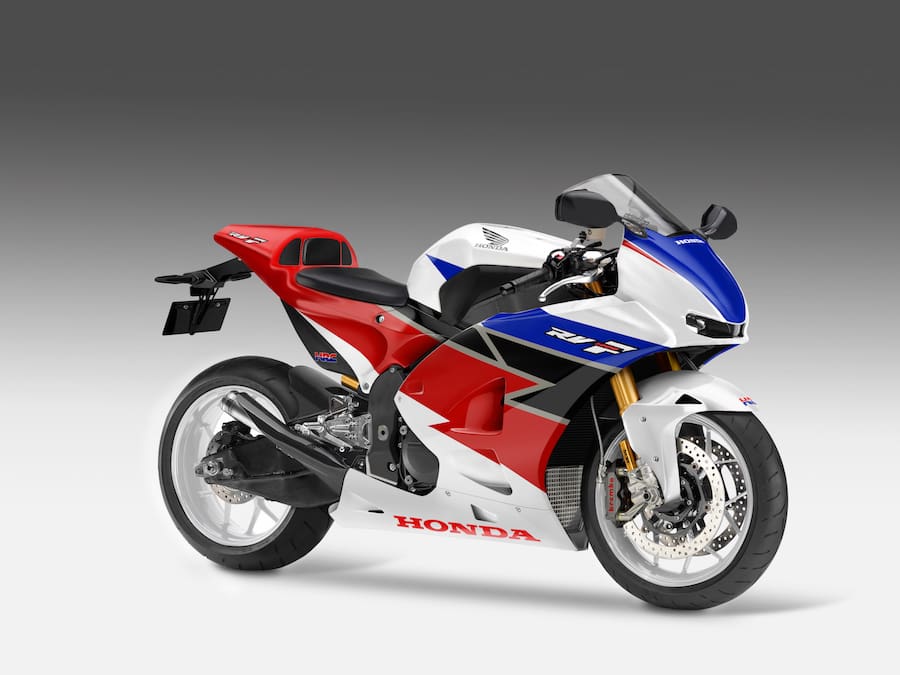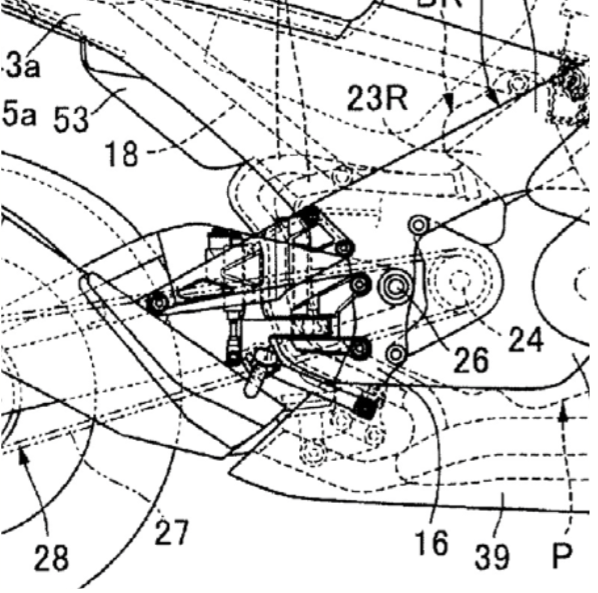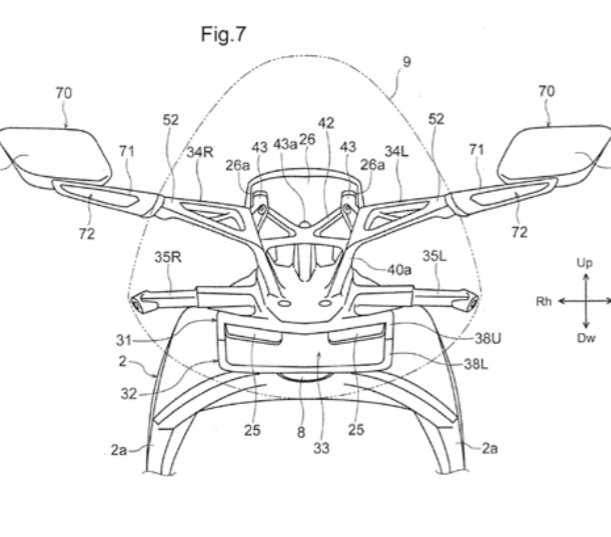We already know Honda is plotting a new V4-engined superbike as part of the company’s 70th anniversary celebrations in 2019, and now a new batch of patents have emerged that offer more insights into the machine.
Most important is a patent that reveals the design of the bike’s seat and tail unit.
We know the engine is a V4 because it’s described in the documents as having: “A front bank and rear bank, which are configured in a
V shape opened upwardly and connected to a front upper part of the crankcase. Each of the front bank and rear bank is configured of two cylinders.”
It also specifies there will be a chain final drive, so this is no VFR1200 derivative.
A second patent that relates to the exhaust hanger and footpegs gives even more away, while a further patent, potentially related to the same project, might give a glimpse of the bike’s front-end styling.
With its introduction not expected until late 2018 at the earliest, there’s still quite a wait before we see the final design. But the early signs suggest it will be a stunner.

pulses racing
PATENT 1: SEAT UNIT
This patent shows a purely single-seat design that draws air in through a NACA duct on the top, where the pillion seat would normally be, and through a pair of intakes either side of the tail behind the rider’s seat. All three merge to exit through a large hole at the rear. The objective is to reduce drag by giving a straighter airflow down the rider’s back and out through the back of the bike.
This patent is clearly aimed at a roadbike that needs tail lights, indicators and a licence plate hanger – all of which are mentioned in the patent, so no chance this might be a racebike design.
The patent says that it “aims to provide a rear structure of a motorcycle that can reduce the running resistance by straightening a flow of air more effectively, while ensuring the visibility of a tail light unit”. And, while modern GP bikes have
small tail lights, that’s not what’s being talked about here.

PATENT 2: HANGER & ’PEGS
A second patent refers to the design of the exhaust hanger and footpegs. These are simpler and lighter than usual and incorporate a heat shield to protect the rider’s foot from the header pipes for the two rear cylinders that run down behind it. Unlike the RC213V and RC213V-S, there’s no under-seat exhaust for the rear cylinders.
However, don’t read too much into the front section of the patent. The drawings show placeholder styling that’s basically the same as an old RC211V, along with a normal beam frame. Other patents for the bike, published last year, revealed that it will actually have a Ducati Panigale-style monocoque chassis where the engine provides most of the structure, with a cast-aluminium airbox housing providing support for the steering head.

PATENT 3: FRONT COWLING BRACKETS
The last patents cover the front cowling brackets for a new superbike, including two tiny headlights hidden inside a massive air intake in the nose.
Air is ducted past the headlights and straight through a hollow steering head via an exotic-looking plastic or carbon-fibre duct that also holds the fairing stays and mirror brackets.
The patent shows this design fitted to an in-line four-cylinder bike, much like an old Fireblade, but since everything behind the nose is merely a placeholder for the purpose of the patent, there’s no reason to believe that this is what it’s really intended to be used on. Notably, it isn’t related to the RC213V-S since the mirrors on that bike are mounted on the ’bar ends, not on fairing brackets.

By Ben Purvis











